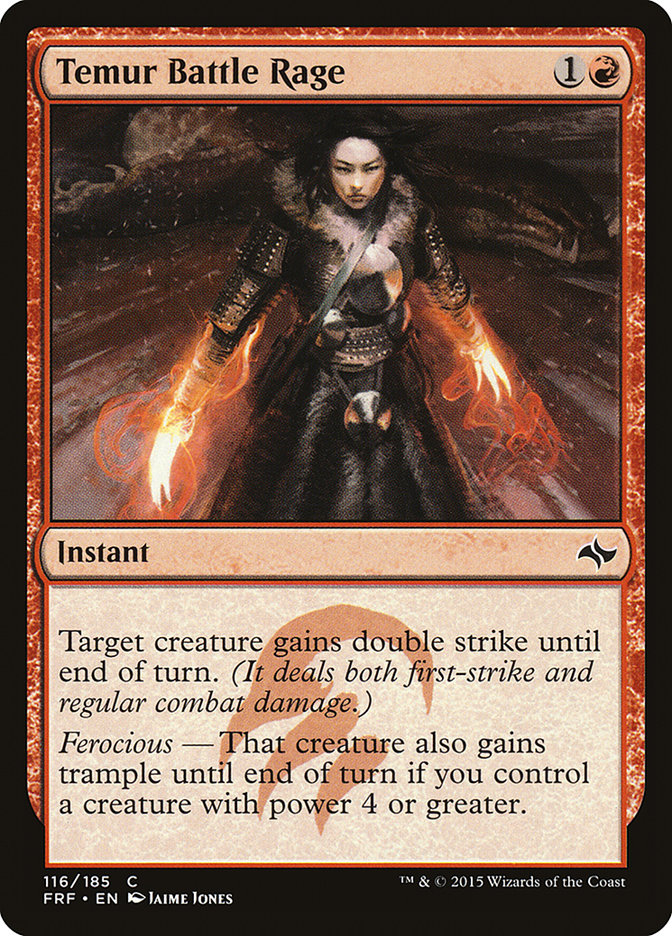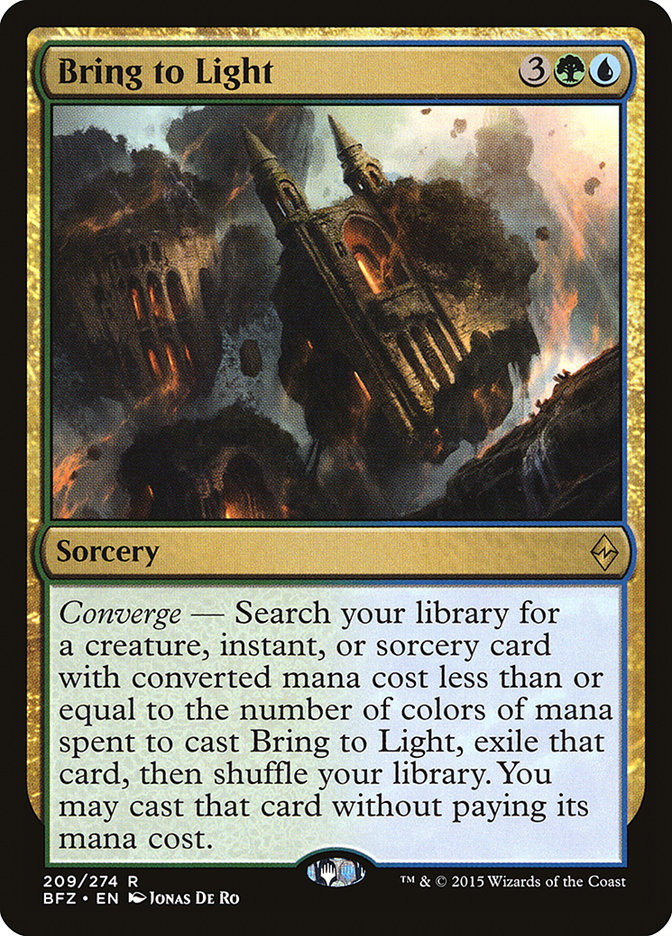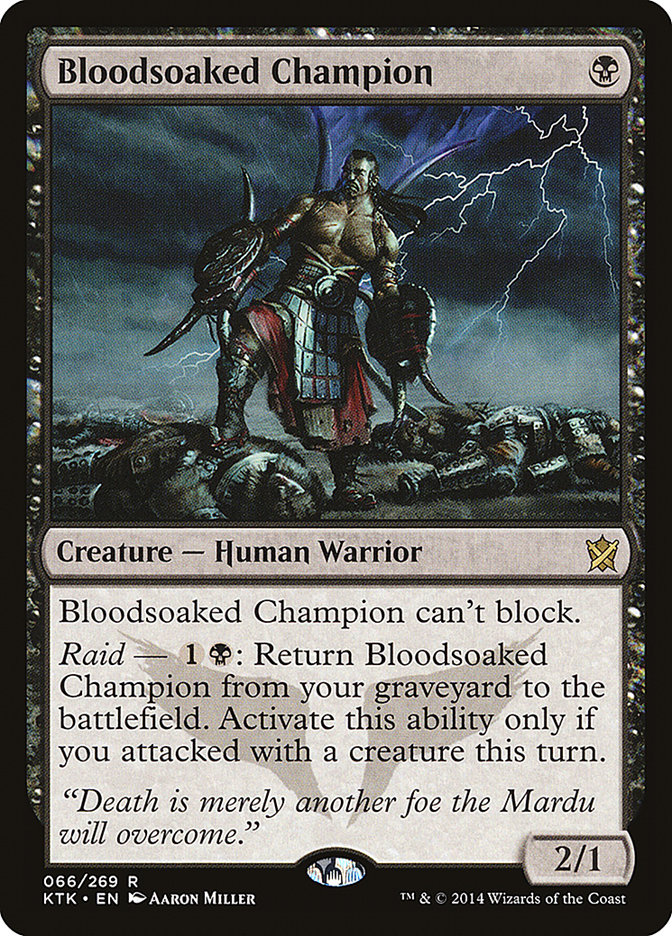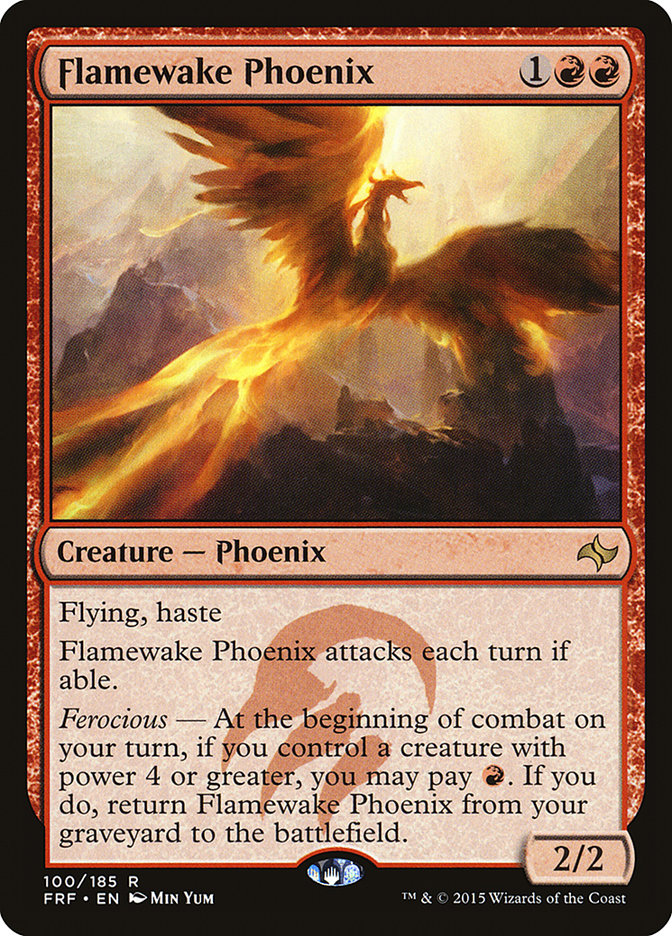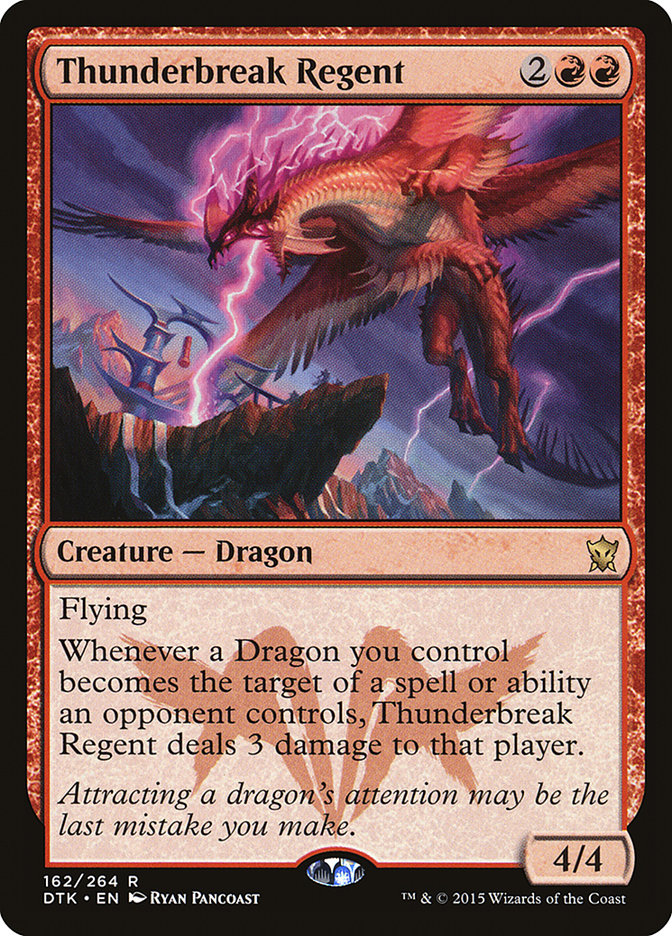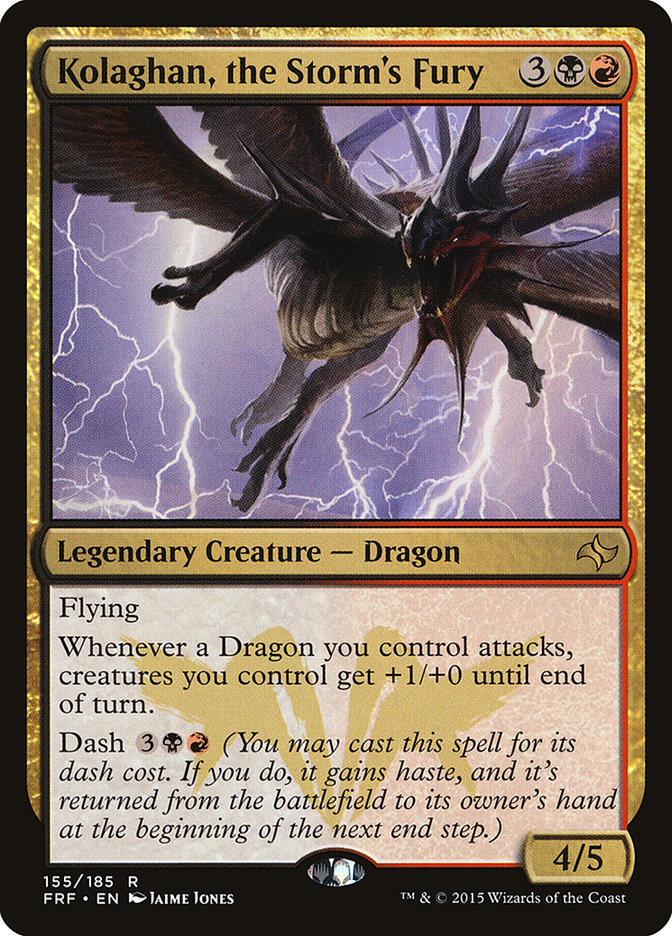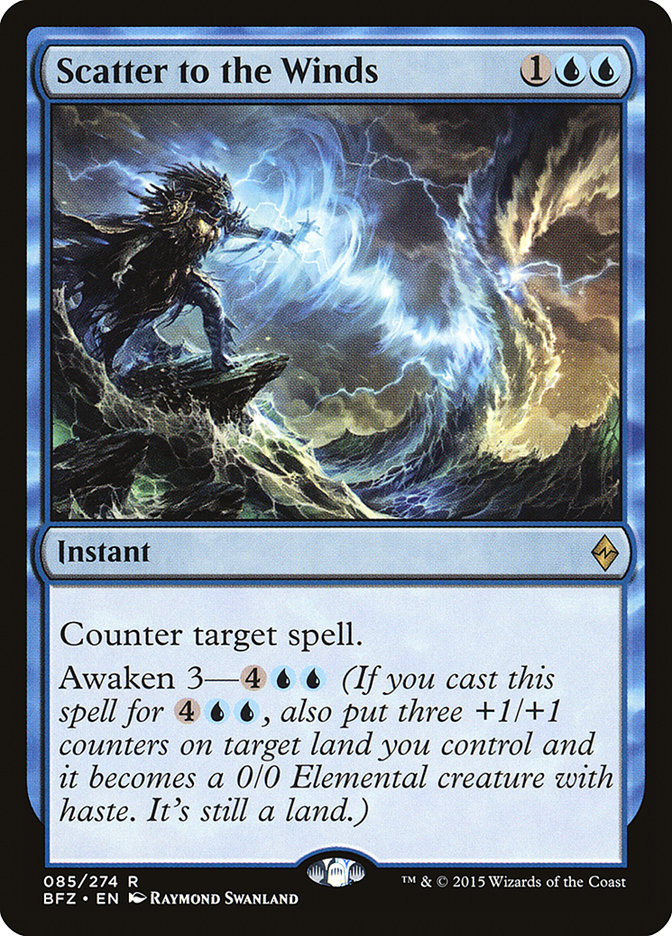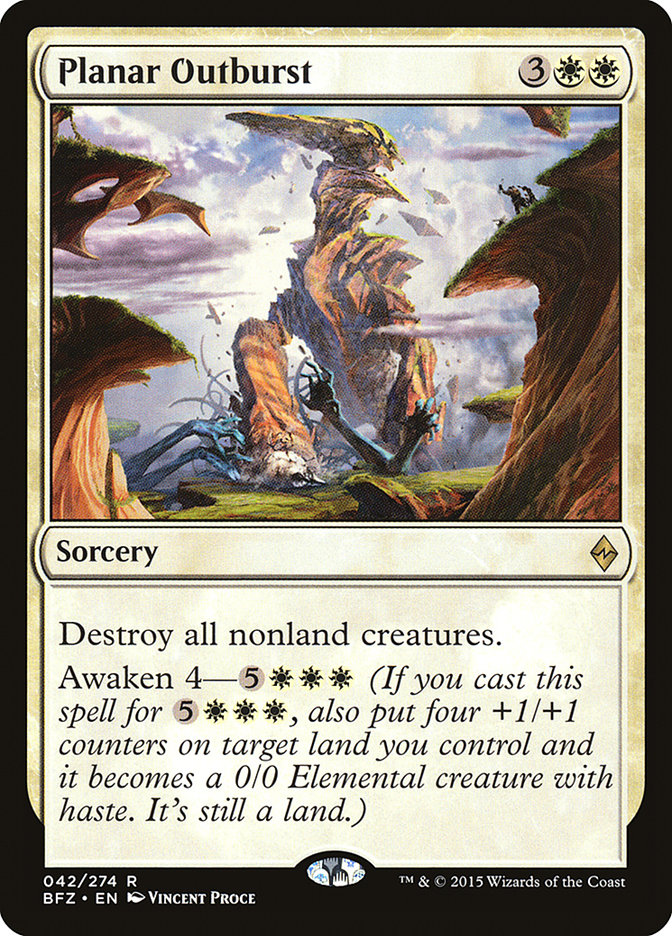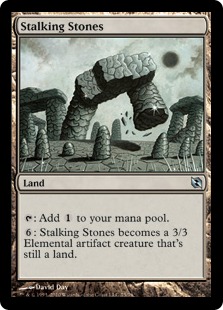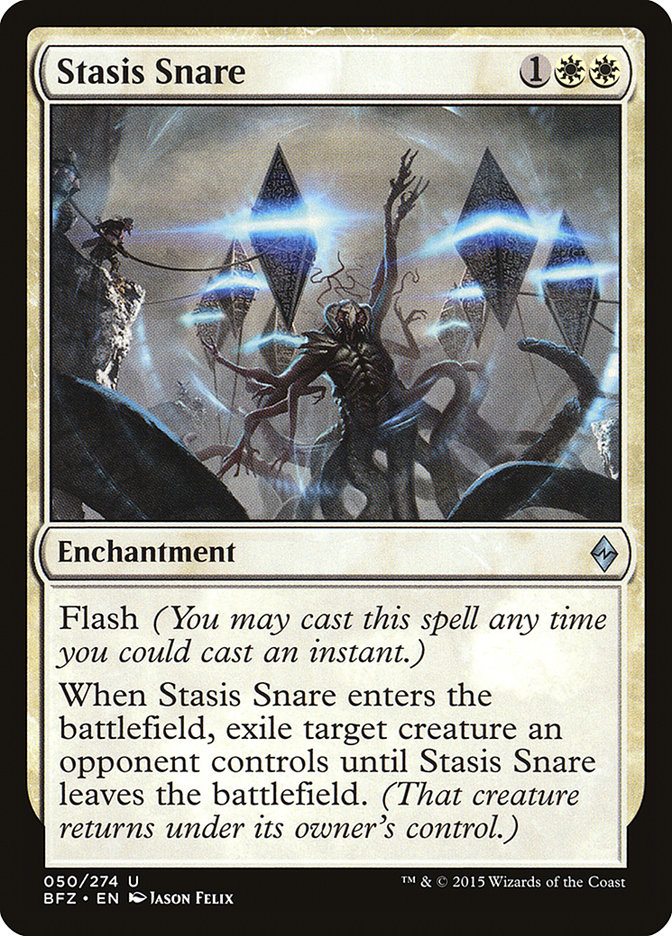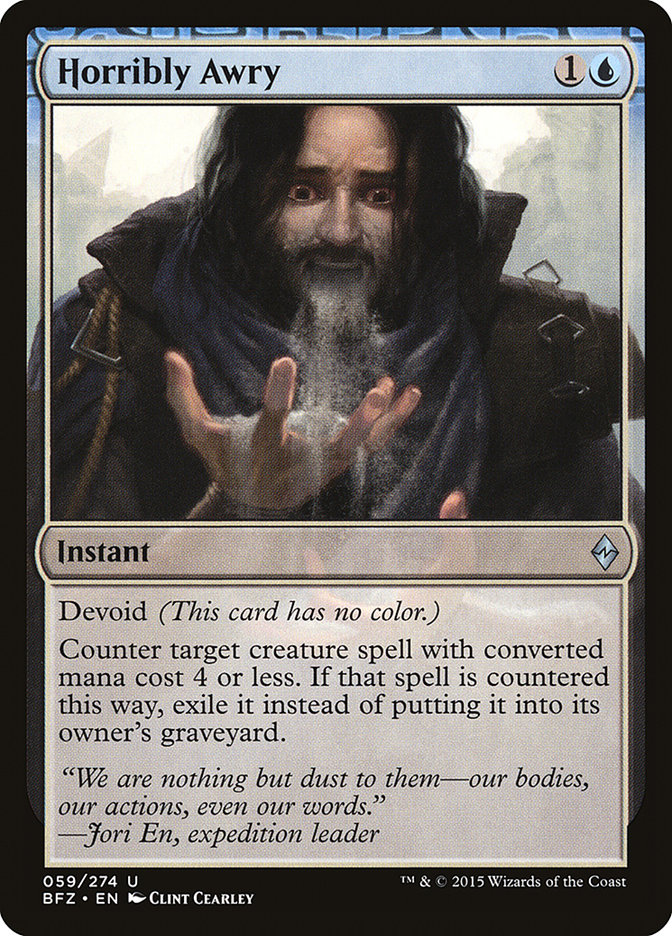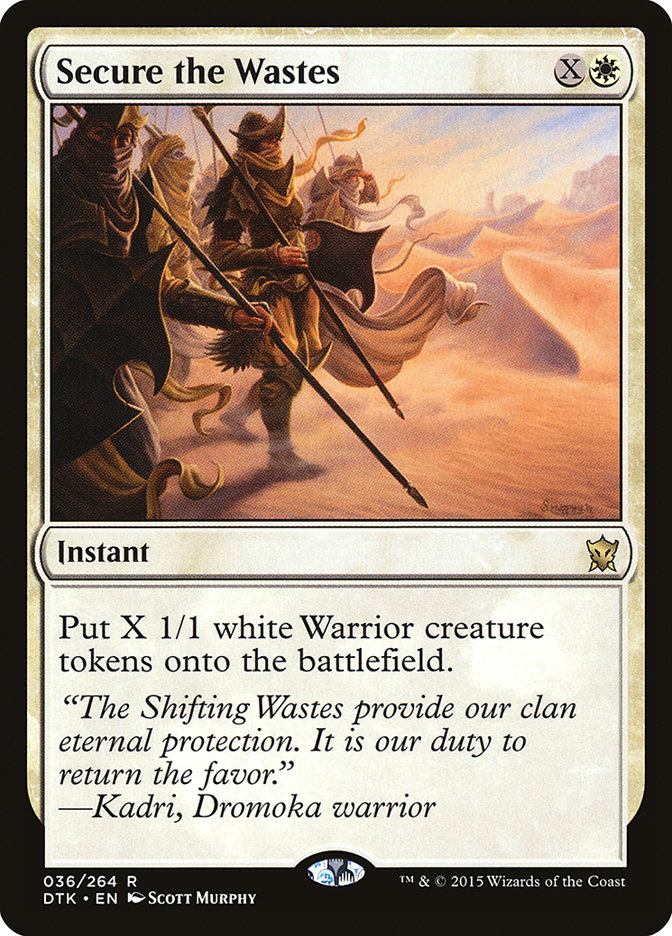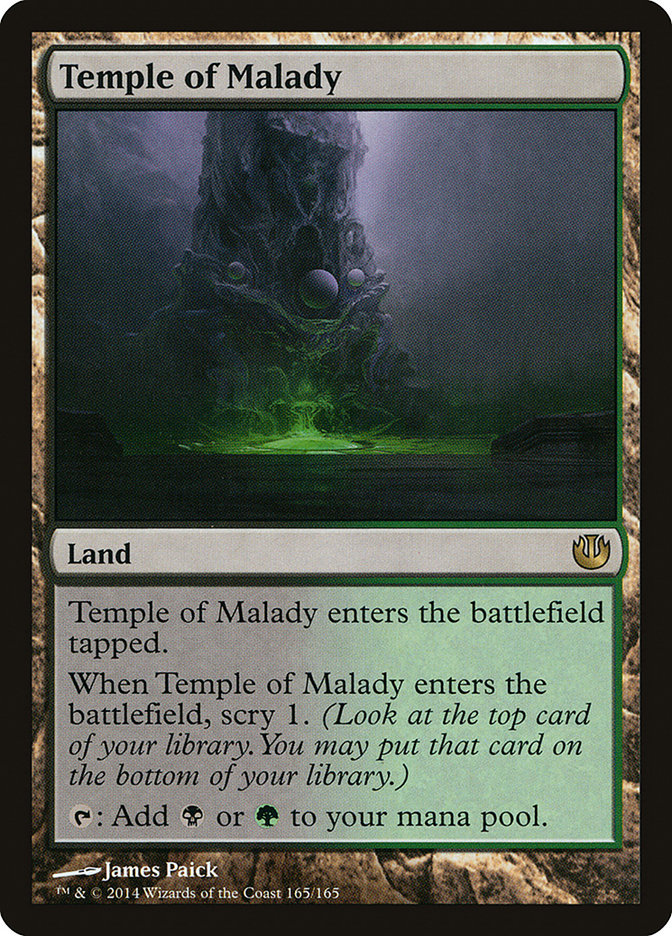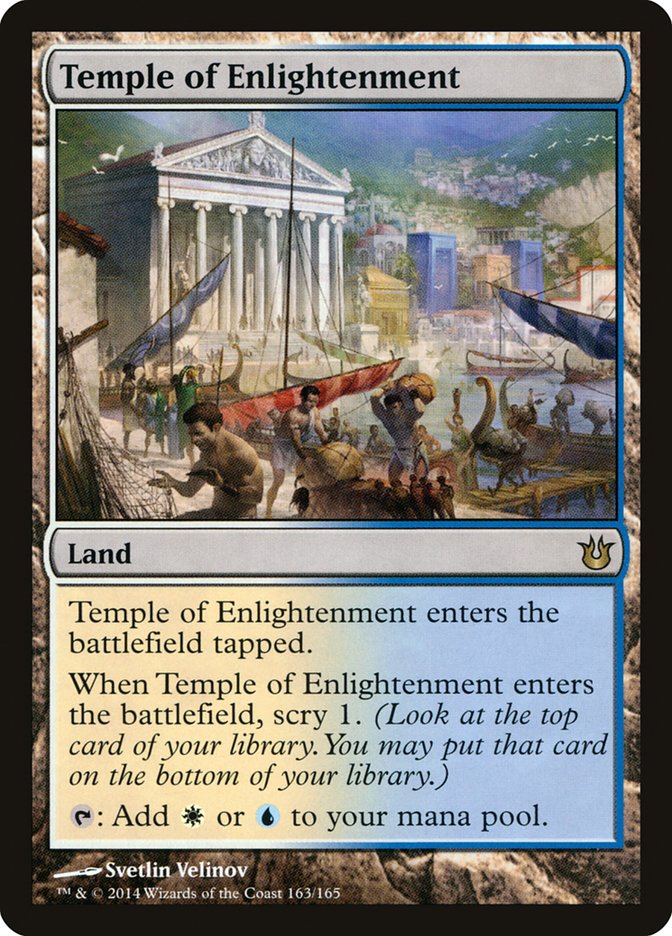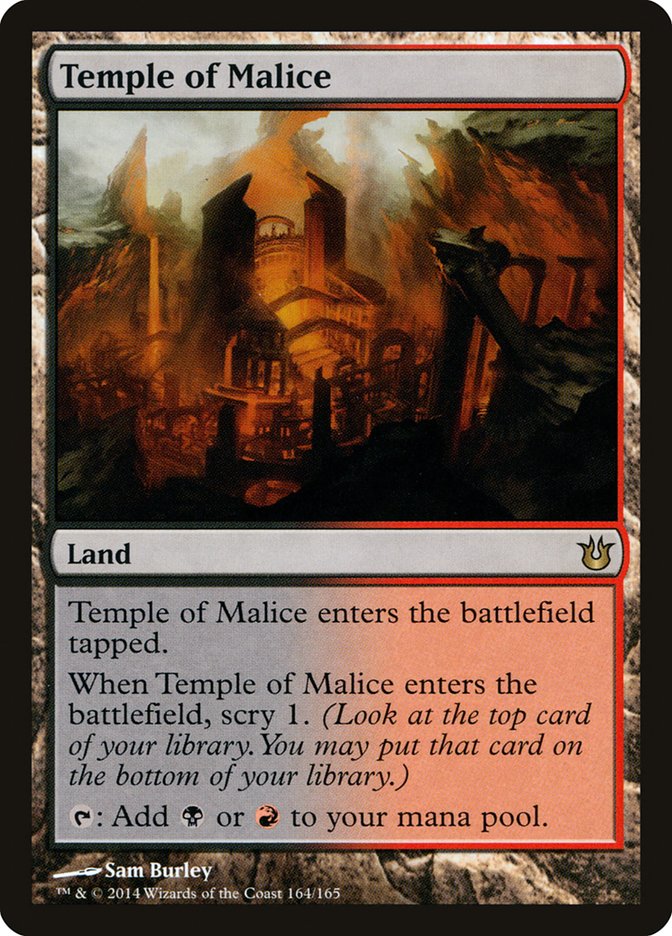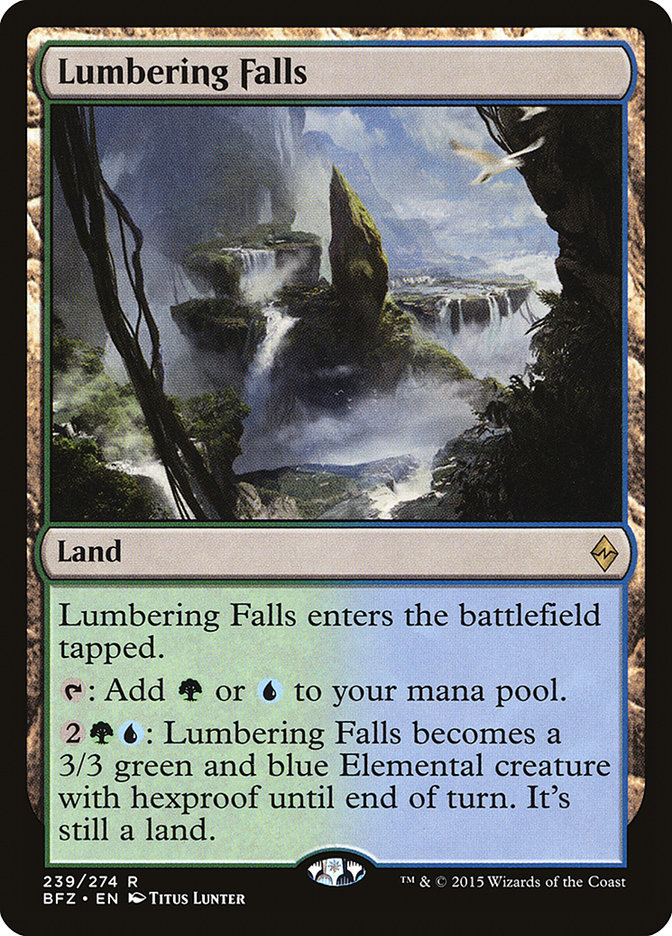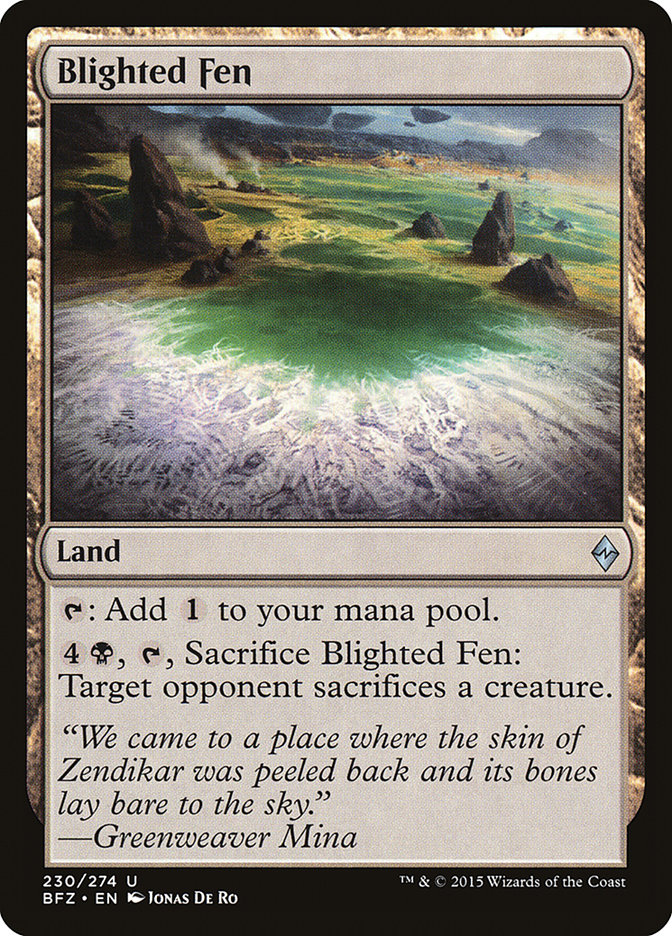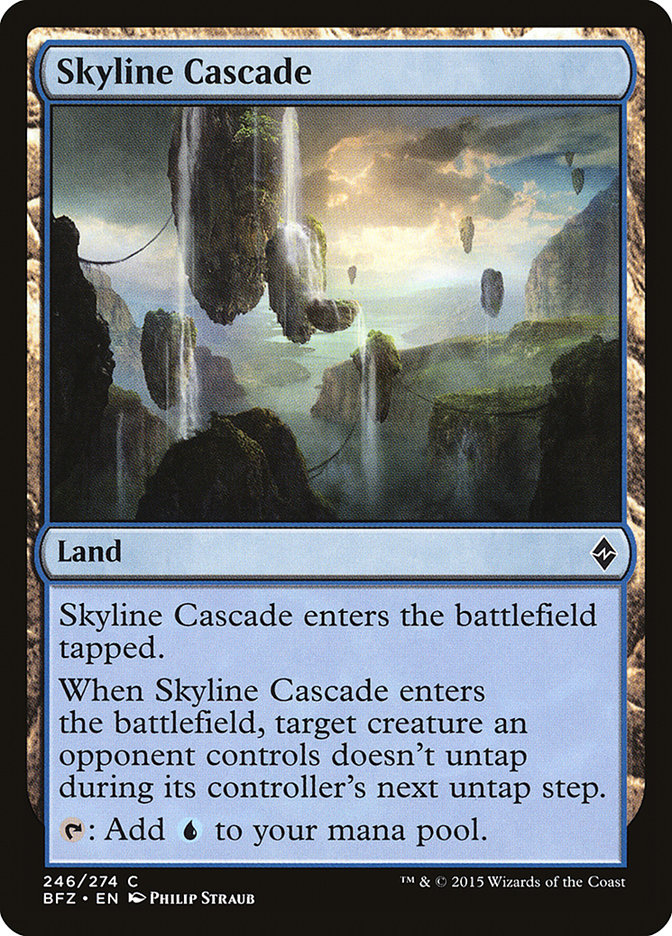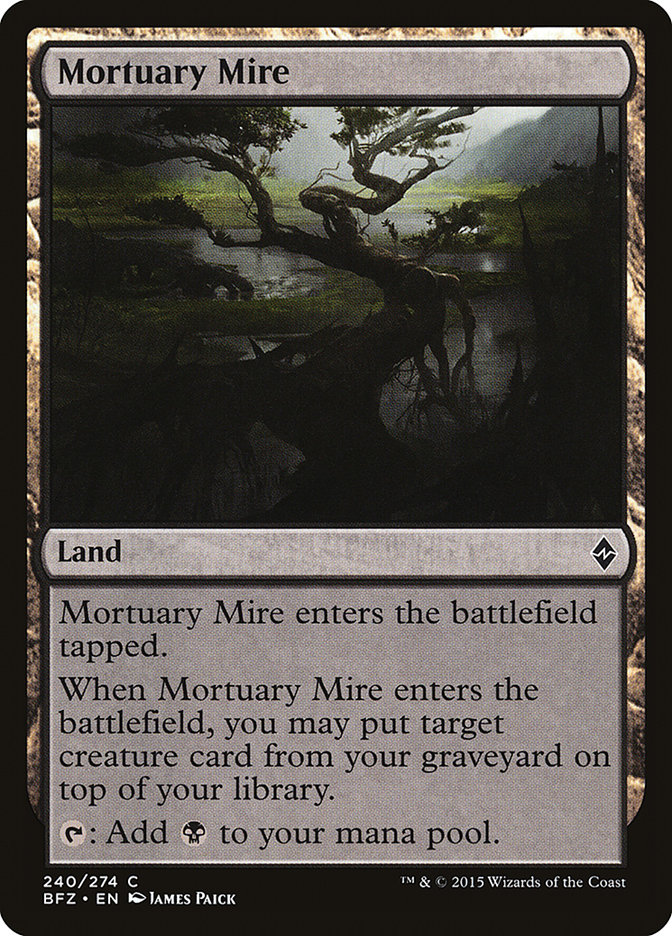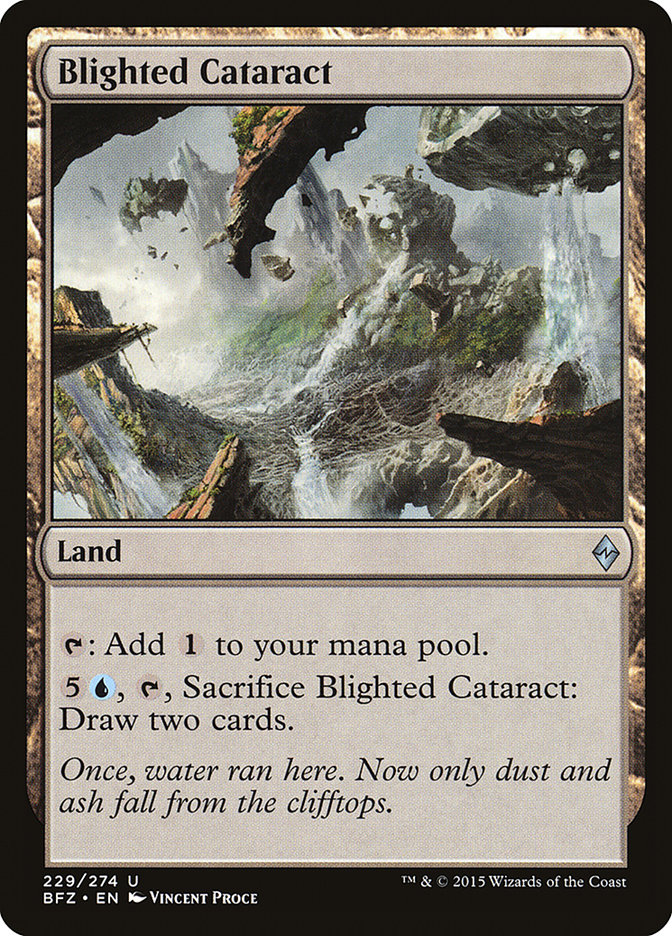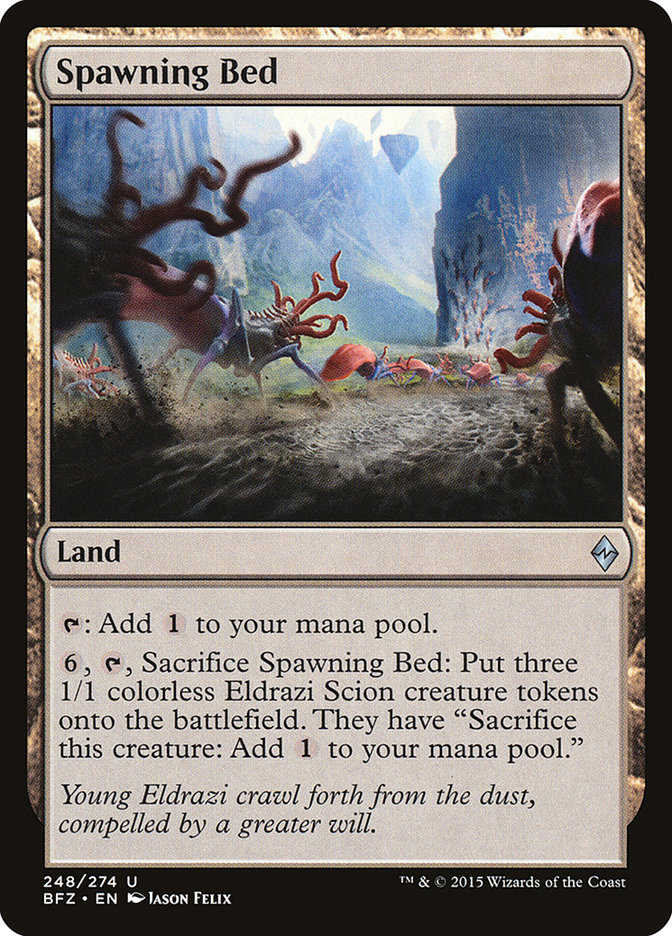Week one of Battle for Zendikar Standard has passed, and what a weekend.
From killing your opponent on turn 4 with Temur Battle Rage, to finding what you need with the tutoring options of Bring to Light, to going long with
Dragonlord Ojutai, week one was a smashing success. The talk of the tournament was how effective the fetchland plus Battle land manabases were, but in the
end, two consistent and proactive two-color decks met in the finals. This isn’t surprising, as it is much easier to tune a two-color deck than a four- or
five-color one.
Aside from top 8, however, there were some pretty awesome two color decks that just missed, and today we’re going to look at two of them.
Creatures (27)
- 1 Ashcloud Phoenix
- 4 Bloodsoaked Champion
- 2 Kolaghan, the Storm's Fury
- 3 Flamewake Phoenix
- 4 Thunderbreak Regent
- 3 Zurgo Bellstriker
- 4 Forerunner of Slaughter
- 2 Drana, Liberator of Malakir
- 4 Makindi Sliderunner
Lands (25)
Spells (8)

Stephen Dykman’s R/B Aggro deck just missed making top 8, and it is a great look at what is possible as far as aggression goes in the format.
Featuring seven one-drops and eight two-drops, Stephen’s deck gets on the board fast while people are still fuddling with their lands, and most of the time
he will be attacking for at least five on turn 3.
What’s great though is that there are quality one- and two-drops. Bloodsoaked Champion is a really great Magic card that has been around for a while but
never really had a home. There were no good aggressive black decks in the previous format, and most of the format’s Savannah Lions were held in check by
Courser of Kruphix, Sylvan Caryatid, and Fleecemane Lion. Those roadblocks no longer exist, and Bloodsoaked Champion is ready to shine.
The two new two-drops both hit pretty hard as well. Forerunner of Slaughter does a very passable Flinthoof Boar impression, as it can be a 3/2 on turn 2 or
a hasted 3/2 later in the game. While I think the deck could stand for a few more fetchlands, Makindi Sliderunner is also a very solid two-drop that takes
good advantage of the deck’s higher curve and higher amount of lands.
The deck also utilizes the Dragon theme, which adds to both its resilience and power level, and allows it to use one of the best removal spells in the
format in Draconic Roar. Thunderbreak Regent is definitely one of the premier threats in the format, and the deck having a number of flying threats helps
with its reach.
I also really like how incidentally resilient many of the deck’s threats are. Bloodsoaked Champion and Flamewake Phoenix are always ready to come back for
more, and I wonder if the new Akoum Firebird has a place in the deck as well. The deck also just gets to play the amazing Drana, Liberator of Malakir, as
well as some of the best removal in the format in Murderous Cut and Wild Slash.
I like this deck a ton, and I think it is going to be a major factor going forward.
On the opposite end of the spectrum, we have Will Erker’s U/W Control deck.
Creatures (1)
Planeswalkers (2)
Lands (28)
Spells (29)

I must say this list looks very innovative.
At first glance, there are two major questions – Where is Jace, Vryn’s Prodigy? And how the hell do I actually win?
While Jace, Vryn’s Prodigy is one of the best cards in the format, it is definitely less impressive in U/W Control than in other decks due to the more
reactive nature of the deck. I was happy with my Jaces in Milwaukee, but they may not be a necessary component to the deck. With no Jaces present, Will’s
deck has essentially zero targets for removal spells, and this means his opponents are going to have a good number of dead cards in their deck game 1.
So, aside from Gideon, Ally of Zendikar, how does Will actually win the game without a finisher like Elspeth, Sun’s Champion?
Interestingly enough, he kills you with Cancel and End Hostilities.
I’ve never been a fan of dedicated win conditions in control decks. Whenever you draw an Aetherling in your opening hand you’ve essentially mulliganed, and
the reason why Elspeth, Sun’s Champion was such a format-defining card was because it was both an amazing control element and a finisher all in one.
Without Elspeth, a U/W Control deck needs some way to actually win the game, and Will has found it quite incidentally.
Early on, Scatter to the Winds is going to counter spells just like Dissolve would; Planar Outburst is going to sweep the board just like End Hostilities
would. The difference is that on turn 14, you are going to be able to pay some extra mana and place a threat in play as well.
This is great deck design.
Old control decks back in the day used to use cards like Stalking Stones as their win condition because they could then focus all their spells on actually
controlling the game. Once the lategame had been established, you would wake up the Stalking Stones and eventually take the game down. Using these awaken
cards to fulfill a similar role is brilliant. Will also utilizes a full set of Blighted Cataract in his list as well, giving you even more value from your
lands.
I think Stasis Snare and Horribly Awry are fantastic additions to U/W Control, as both fall perfectly in line with what the deck wants to do. Stasis Snare
takes the place of Banishing Light, and instant speed removal is exactly what the deck wanted. While the deck is still somewhat soft to planeswalkers,
being able to leave mana open for counterspells more often means you should be able to deal with them in that manner. Horribly Awry is just another great
spell for keeping pace in the earlygame and makes an excellent addition to the counterspell suite.
My one concern with the deck is how it will deal with small creatures and one-drops. Without a card like Last Breath, cards like Bloodsoaked Champion,
Zurgo Bellstriker, and friends seem like quite the hassle to answer. I think because of this Arashin Cleric is an extremely important sideboard card, and
Secure the Wastes could be a very reasonable maindeck two-of. Don’t think of Secure the Wastes as a finisher, think of it as an instant speed Elspeth
activation or two that will allow you trade off with small creatures so you can deal with the big ones on your own terms. It is very important that this
deck’s answers be instant speed, and Secure the Wastes scales nicely.
Will’s list is a bit rough, but there are some really groundbreaking ideas present in it. This is something I will definitely be working on.
Aside from new decks, a few other things seem apparent to me after playing with Battle for Zendikar for the first time.
We’ve Been Spoiled By Temples
I played a Dark Jeskai Dragons deck at a Super IQ last weekend, and I was frustrated with how often I seemed to be mana flooding. My deck had the 26 lands
that a Dragon deck requires, but as the tournament went on, it seemed to be a common thread of conversation that people were getting flooded fairly often.
Was I just in a tournament with a bunch of unlucky complainers?
Perhaps, but I also think that we’ve really taken the last year of Temples for granted.
It’s easy to forget how things used to be, but Temples were not always a thing. Aggressive decks would play between 20 and 22 lands to mitigate flooding,
and control decks would play between 26 and 28 lands to make sure they hit all of their land drops. Yet, in the last year we’ve seen quite the opposite.
Many of our aggressive and midrange decks have weighed in at a hefty 26 lands, partly due to color requirements and partly due to Temples smoothing out our
draws.
We no longer live in that world.
Midrange decks that don’t have card manipulation are going to suffer the most, but we all now must be aware of the deckbuilding limitation a world without
temples entails. As a result, decks will likely become more polarized. Midrange decks stand to gain the most from Temples, and as such, lower to the ground
aggressive decks and big mana/endgame control decks now regain some of their advantages.
The other option besides altering mana curves is to make sure that you are getting good value from your lands. This can happen with mana sinks like Warden
of the First Tree or Rashaka Deathdealer, but it can also be done by using lands that have extra value attached. Creature-lands and lands that act like
spells go a long way towards mitigating flood and making sure you have action in the lategame even if you don’t have powerful card draw.
But there is a major issue with these non-basics that leads us to our next point…
It Was a Bad Design Decision to Include Battle lands in a Set About Lands
I think Wizards R&D has been doing a fantastic job lately, but I think putting the Battle lands into a format that already has fetchlands and is
supposed to be all about using cool new non-basic lands was a very poor design decision.
There are seventeen non-basic lands in Battle for Zendikar that are not Battle lands, but the presence of the Battle lands almost completely invalidates
them. As people have already found out week one, the best way to build a manabase at the moment seems to be a ton of fetchlands, some basics, and some
appropriate Battle lands.
The opportunity cost of putting a land in your deck that is not either a basic land, fetchland, or Battle land is extremely high because of how the Battle
lands interact with other non-basic lands. Even too many Battle lands is a bad thing, as you want to ensure you have the proper basic lands on turn 1 and 2
to make sure your mana runs smoothly. For the same reason that four Cinder Glade is incorrect in Atarka Red and Mystic Monastery is incorrect in Jeskai, it
is going to be incorrect to play pretty much any non-basic as anything more than a one or two-of if you wish your mana to work properly.
The very nature of fetchland+ Battle land manabases is to be as exclusive as possible to other lands, and that’s no fun at all.
There is definitely an issue when non-basic lands are too good and end up in far too many decks. Because the opportunity cost of playing Mutavault was so
low when it was legal in Standard, the card was actually in almost every deck. The non-basic lands in Battle for Zendikar do a great job at
overcoming this by either being color specific or archetype specific, but until we see the exit of fetchlands from the format, we are hardly going to see
any of them at all. I don’t understand why you would make the best manafixing lands in the set interact so poorly with the rest of the set.
Aside from that gripe however, Battle for Zendikar has certainly arrived with a bang, and with the Pro Tour looming it’s going to be an
interesting few weeks. Remember when you are building your decks that we don’t get a free three to five scrys every game anymore, that putting a non-basic
into your Battle land/basic/fetchland manabase is a real cost, and that just because you can play three or more colors doesn’t mean you have to!

